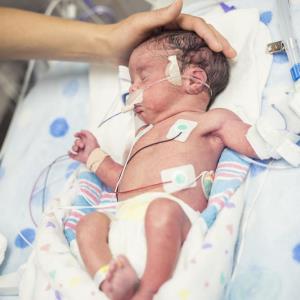Development of eosinophilic esophagitis (EoE) is associated with prenatal, intrapartum, and neonatal factors, particularly preterm birth and admission to neonatal intensive care unit (NICU), suggests a study.
A group of researchers assessed all EoE patients in Denmark (birth years 1997‒2018) and matched patients to controls based on sex and age using risk-set sampling. They obtained data on prenatal, intrapartum, and neonatal factors, such as pregnancy complications, mode of delivery, gestational age at delivery, birthweight (expressed as a z score), and NICU admission.
Crude and adjusted odds ratios (aOR) of EoE were computed using conditional logistic regression in relation to each prenatal, intrapartum, and neonatal factor, which provided an estimate of incidence density ratios with 95 percent confidence intervals (CI).
A total of 393 patients and 3,659 population controls were included (median age at index date 11 years; 69 percent male). Gestational age showed an associated with EoE, peaking at 33 vs 40 weeks (aOR, 3.6, 95 percent CI, 1.8‒7.4), as did NICU admission (aOR for a NICU hospitalization of 2‒3 weeks vs no admission, 2.8, 95 percent CI, 1.2‒6.6).
Interaction analyses revealed a more robust association between NICU admission and EoE in infants born at term than in those born preterm (aOR for term infants, 2.0, 95 percent CI, 1.4‒2.9; aOR for preterm infants, 1.0, 95 percent CI, 0.5‒2.0).
An association was also noted between pregnancy complications and EoE. Specifically, infants who were very growth restricted at birth showed a higher rate of EoE (aOR, 1.4, 95 percent CI, 1.0‒1.9; z score, ‒1.5 vs 0). On the other hand, mode of delivery did not correlate with EoE.
“Further research is needed to elucidate the mechanisms underlying the observed associations,” the researchers said.

